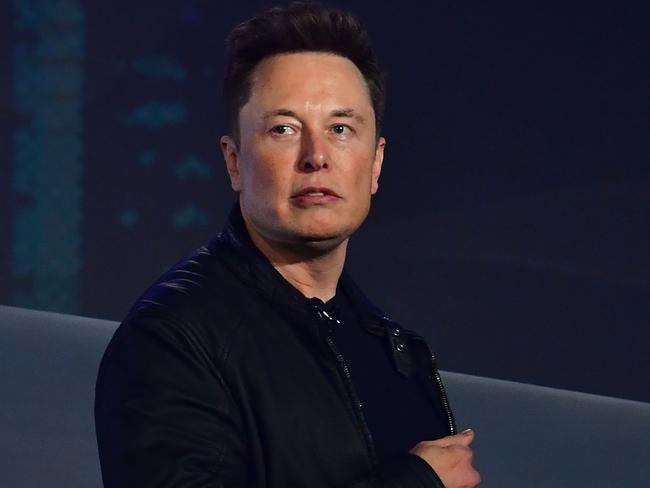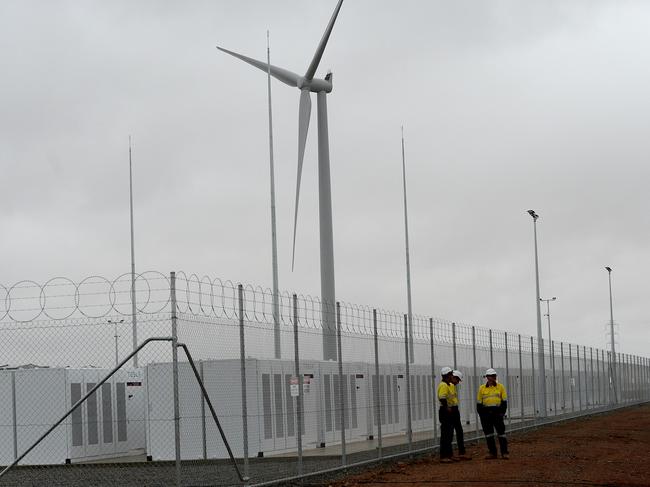Piers Akerman: Lefties and Greenies will take us back into a new Dark Age
Tesla’s Elon Musk provided the first big battery and the taxpayers gave him a handsome profit. Supporters of the project love it but anyone following the detail can immediately see that it can never be anything but a stopgap measure, Piers Akerman writes.
Opinion
Don't miss out on the headlines from Opinion. Followed categories will be added to My News.
- Lefties’ wishful thinking makes Santa Claus seem believable
- Reducing Australia to special interest tribes serves no one
Pandering to the green-left and delivering subsidised alternative energy sources and more batteries will not prevent power blackouts this summer.
The federal government shows little spine in going along with gimmickry.
It should be respecting the wishes of those who voted for reliable energy at last May’s election and guaranteeing the supply of instantly dispatchable electricity through new coal-fired or nuclear power generation.
South Australia’s “big battery” is now going to get bigger with a 50 per cent expansion, thanks to support from the Liberal-National government and about $70 million on top of the $90 million of taxpayers’ money the original battery cost.
This will help modulate the intermittent frequency of the wind and solar but only increase the capacity of the Hornsdale Power Reserve to about 150 megawatts.
In real terms, that would power about 65,000 homes or add about 38 minutes duration.
Jamie Oliver reckons it takes 95 minutes to roast a leg of lamb so the family may get fed but they’d still have to eat in the dark.

South Australia’s former Labor premier Jay Weatherill pushed the state onto expensive renewables despite the reality that solar and wind cannot provide sufficient baseload power to give the state much-needed energy security.
Elon Musk provided the first big battery and the taxpayers gave him a handsome profit.
Supporters of the project love it but anyone following the detail can immediately see that it can never be anything but a stopgap measure.
Essentially, when it starts discharging its stored power (much of which will come from the interstate connector from states that have reliable, cheap, coal-fired power stations), the power will actually be used to fire up gas and diesel-fuelled generators to keep the power flowing.
MORE FROM PIERS AKERMAN:
ALP was nobbled by Shorten’s arrogance
China needs a little re-education on principles of freedom
This madness had its genesis in the lengthy blackout that plunged the state into darkness in September 2016, after severe weather knocked out three out of four transmission interconnectors and 23 pylons.
It took more than four days for the power to be reconnected around the state.
The result was skyrocketing South Australian power prices, from a year-long average of $60 a megawatt hour to $9000 per MWh.
The Labor-aligned Grattan Institute later published a report and found that the trail began with the Renewable Energy Target (RET), which mandated 23.5 per cent of electricity be drawn from renewables by 2020.
That’s the outward and visible sign of the dangerous and ideology of the green-left which has seen South Australia embrace green power with greater fervour, enabling more catastrophic power failures than any other jurisdiction in Australia.

The Grattan Institute warned then of the rise of intermittent wind generation and the threat posed in managing the stability and reliability of the power grid. Naturally, it argues that so-called climate change is the villain and that without a single, nationwide climate plan, household power bills will rise unnecessarily and Australia will not hit its carbon-cutting targets.
“So we end up not achieving our emissions targets or, if we do, we do it at even higher costs than is necessary and in the meantime there could even be a risk of blackouts,” the report author Tony Wood said.
Nowhere did it explain exactly how doing anything in Australia about emissions or anything else could possibly affect the climate of the planet, though there’s no doubt some sort of token gesture would give inner-urban Millennials a warm inner glow.
The neighbouring People’s Republic of Victoria is now in the firing line because of its obsession with wind and solar and its ban on new fossil fuel power, including the development of the gas resources which have greatly assisted South Australia.
Victoria has adopted a 50 per cent renewable target by 2030 and also aims to be net zero emissions by 2050. In addition, the state will decide in March on an emissions target that is likely to be a reduction of between 45 per cent to 60 per cent by 2030.
Expect further chaos as green pressure mounts for the closure of EnergyAustralia’s Yallourn unit in the Latrobe Valley.
In fact, if you’re planning a holiday in South Australia or Victoria this summer, don’t forget to pack the candles and stock up on ice for the Esky before crossing the Murray.
